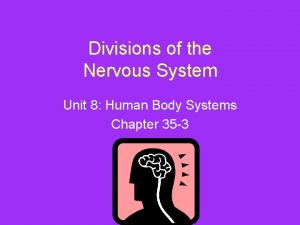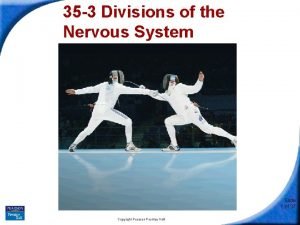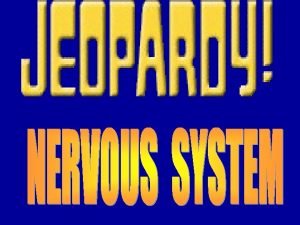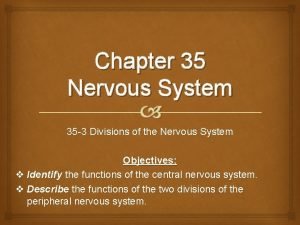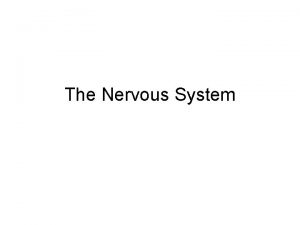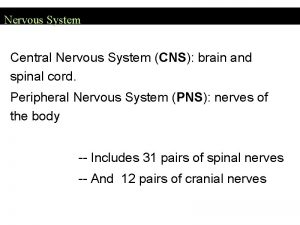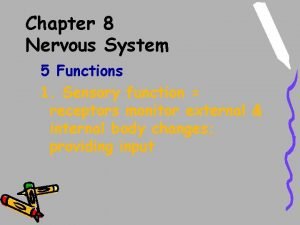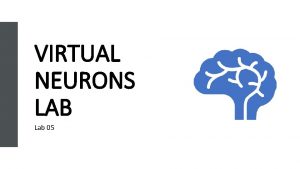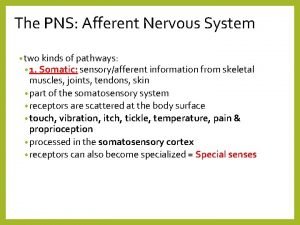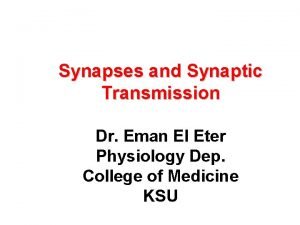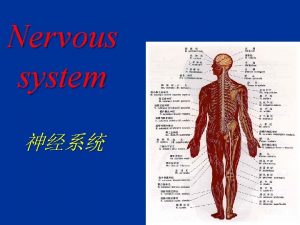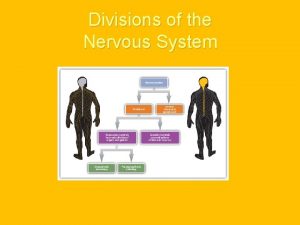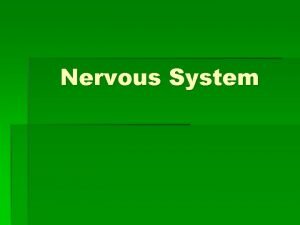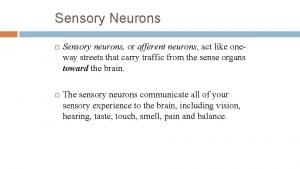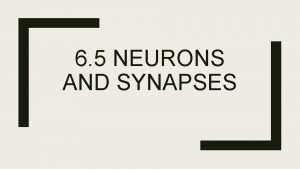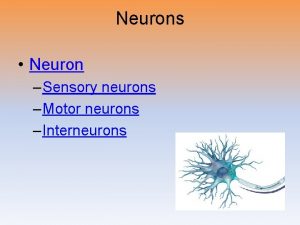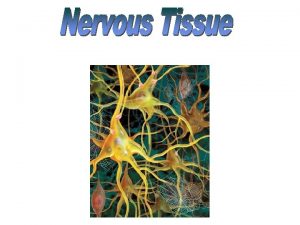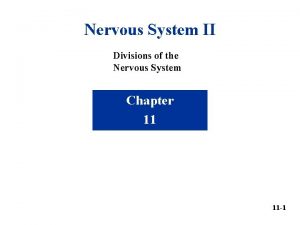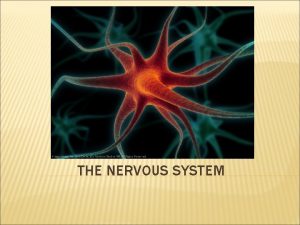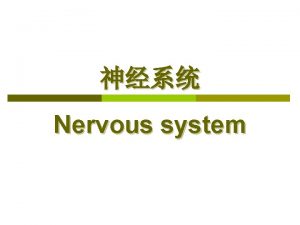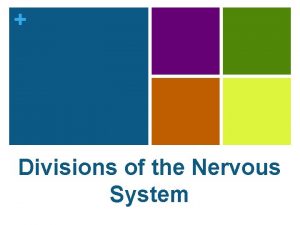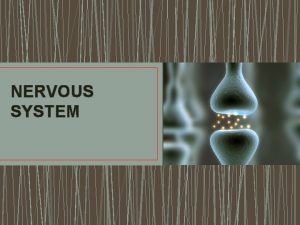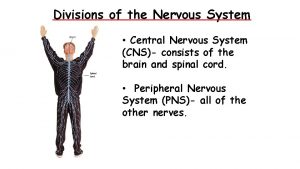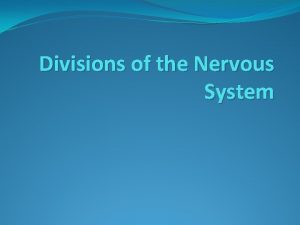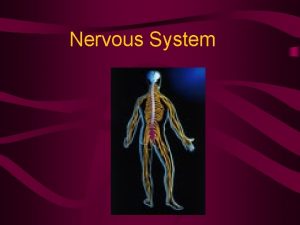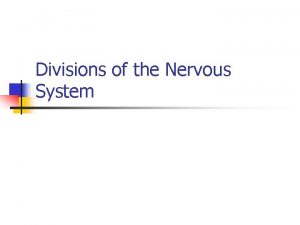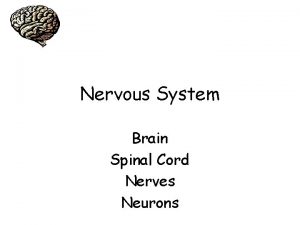The Nervous System Functions Divisions Neurons Functions n






















- Slides: 22

The Nervous System Functions, Divisions, & Neurons

Functions n Sensory Input n Integration n Motor functions

Divisions of Nervous System n Central nervous system (CNS) n Peripheral nervous system (PNS)

Central Nervous System n Brain n Spinal cord

Peripheral Nervous System n n Consists of nerves and ganglia Further divided: ¡ ¡ Afferent division (sensory) Efferent division (motor)

Efferent Division of PNS n Further divided: ¡ Somatic nervous system (voluntary) ¡ Autonomic nervous system (involuntary)

Autonomic nervous system n Further divided: ¡ Sympathetic ¡ Parasympathetic


Nerve Tissue n Neuron n Neuroglia (glial cell)

Neuron

Types of Neurons n Afferent (sensory) n Efferent (motor) n Inter-neurons (association neurons)

Neuroglia n n Do not conduct nerve impulses Serve as protection and nourishment for neurons

Nerve Impulses n Resting membrane n Stimulation of neuron

Resting membrane n n Non-conducting neuron Lots of Na+ outside neuron Lots of K+ inside neuron, but even more negative ions found inside Membrane is polarized


Stimulation of Neuron n n A stimulus changes the membrane to allow passive movement of ions. Stimulus must be strong enough to make membrane highly permeable (threshold).

Action Potential – Nerve Impulse n Depolarization n Reverse polarization n Repolarization


Action Potential Animation n Nerve Impulse

Conduction of Impulse n Action potential must continue the length of a neuron n Neurotransmitters carry impulse across the synaptic cleft to new neuron

Continuous vs Saltatory Action Potentials

Reflex Arcs n n n Functional unit of nervous system Allows for rapid response to stimulus Components: ¡ ¡ ¡ Receptor Sensory neuron Integration center Motor neuron Effector
 8 divisions of the nervous system
8 divisions of the nervous system 35-3 divisions of the nervous system
35-3 divisions of the nervous system Divisions of the nervous system
Divisions of the nervous system Section 35-3 divisions of the nervous system
Section 35-3 divisions of the nervous system Peripheral nervous system
Peripheral nervous system Division of central nervous system
Division of central nervous system Major division of nervous system
Major division of nervous system Neuroglia
Neuroglia Brain parts
Brain parts What are the characteristics of nervous tissue
What are the characteristics of nervous tissue Fundamentals of the nervous system and nervous tissue
Fundamentals of the nervous system and nervous tissue Processes of a neuron
Processes of a neuron Neuron anatomy
Neuron anatomy Neuroglia
Neuroglia Nervous system and digestive system
Nervous system and digestive system Endocrine system and nervous system
Endocrine system and nervous system General mechanism of hormone action
General mechanism of hormone action Endocrine system and nervous system
Endocrine system and nervous system Virtual neurons
Virtual neurons Neuron order
Neuron order Polarized vs depolarized neurons
Polarized vs depolarized neurons 1st order 2nd order 3rd order neurons
1st order 2nd order 3rd order neurons Types of synapse
Types of synapse
